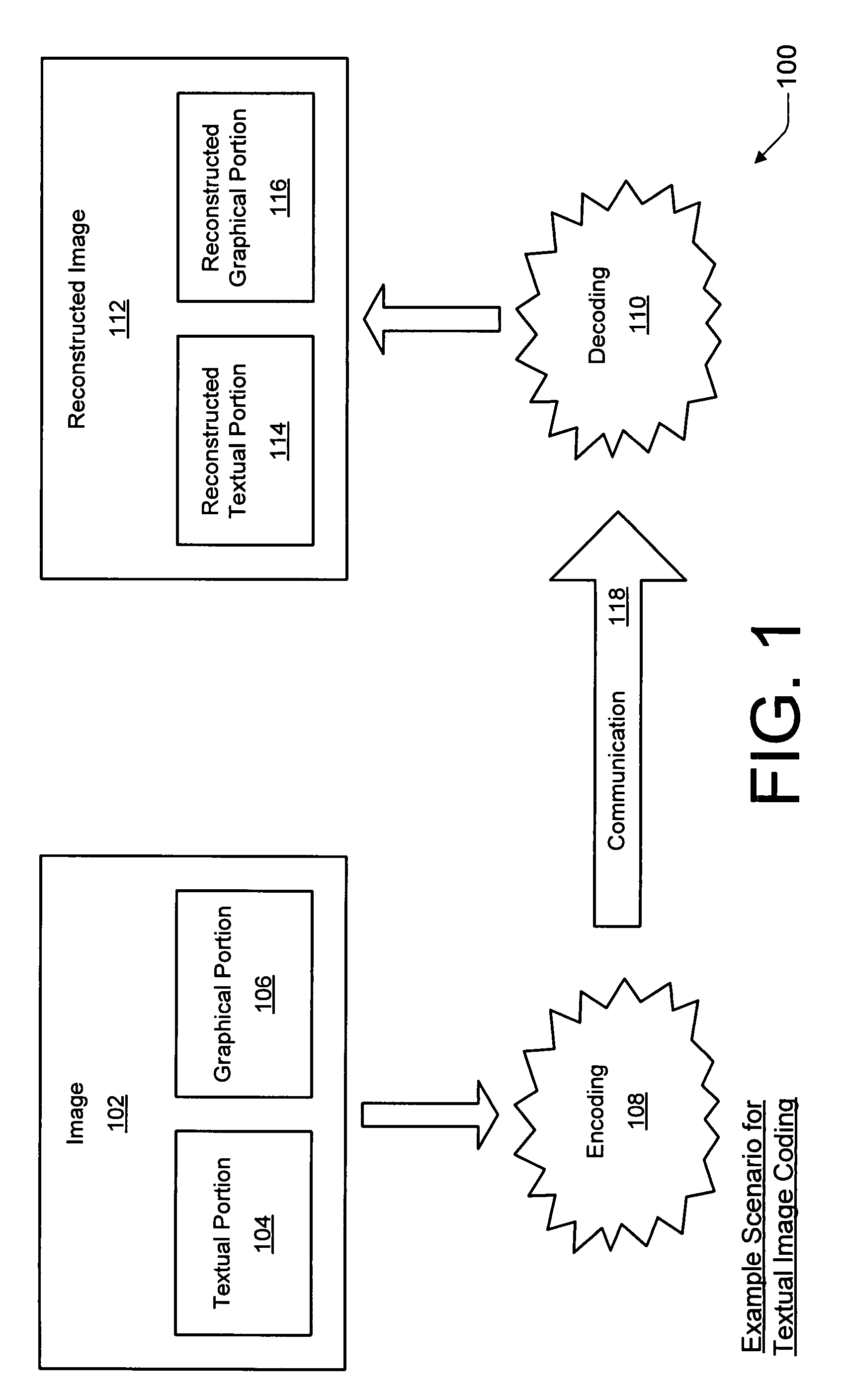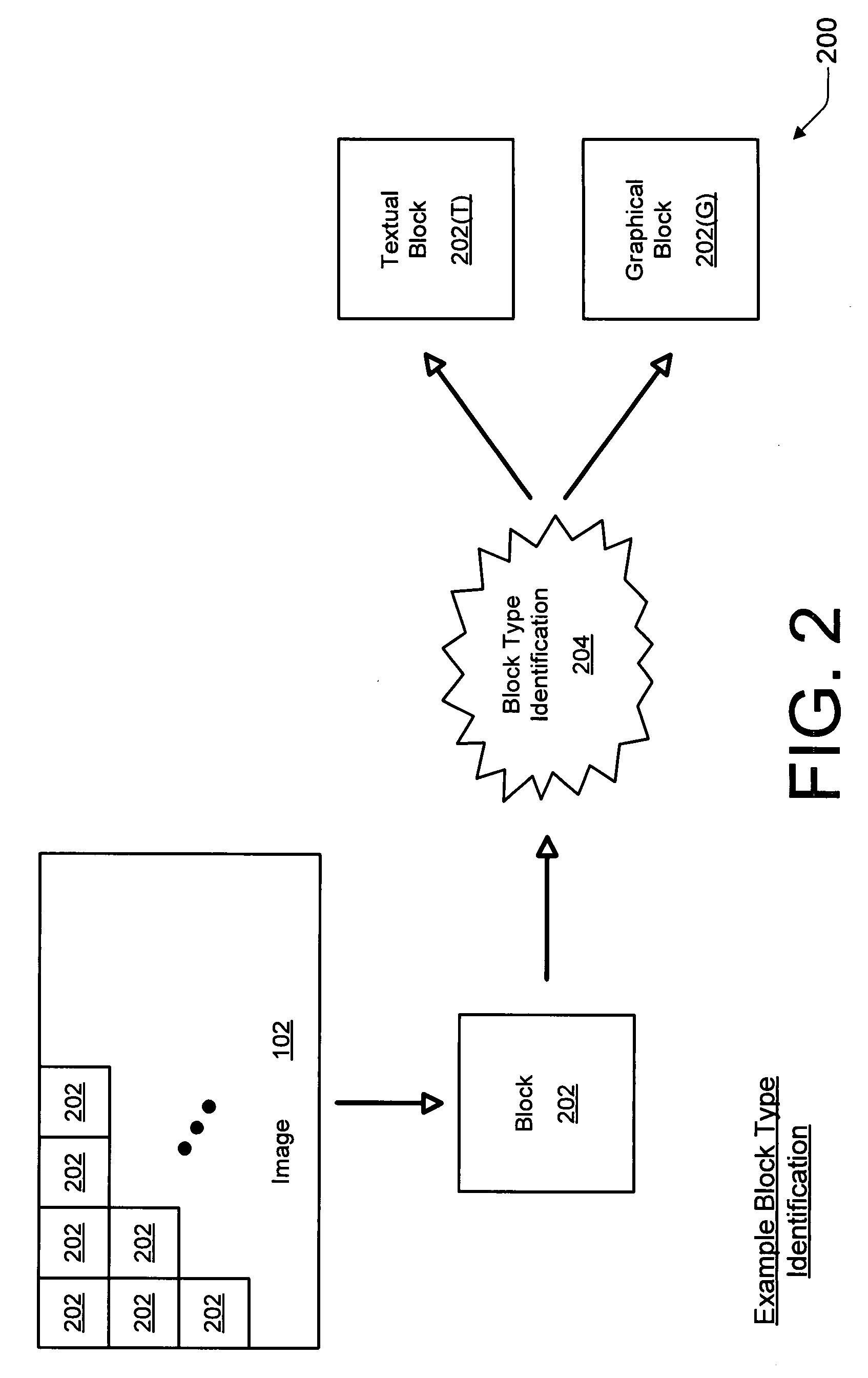Textual image coding
a textual image and coding technology, applied in the field of textual image coding, can solve the problems of degrading the visual affecting the quality of the image, and affecting the effect of compression and decompression cycl
- Summary
- Abstract
- Description
- Claims
- Application Information
AI Technical Summary
Benefits of technology
Problems solved by technology
Method used
Image
Examples
Embodiment Construction
Introduction to Textual Image Coding
With the rapid development of the Internet and the widespread adoption of rich media applications, compound images are produced in addition to natural images. Compound images may include, but are not limited to, web pages, slides, posters, and so forth. Compound images include textual portions and graphical portions. The textual portions include, for example, alphanumeric or other characters in various fonts that are formed from pixels (e.g., bit-mapped) or are otherwise not currently recognized as being individual whole characters. The graphical portions include, for example, natural pictures.
For natural pictures, many existing image and video coding standards (e.g., JPEG2000 and H.264 / AVC) have demonstrated good coding performance. However, they are inadequate at compressing compound images, especially due to any textual portions thereof. In an example embodiment, textual portions and graphical portions of a compound image are distinguished. The...
PUM
 Login to View More
Login to View More Abstract
Description
Claims
Application Information
 Login to View More
Login to View More - R&D
- Intellectual Property
- Life Sciences
- Materials
- Tech Scout
- Unparalleled Data Quality
- Higher Quality Content
- 60% Fewer Hallucinations
Browse by: Latest US Patents, China's latest patents, Technical Efficacy Thesaurus, Application Domain, Technology Topic, Popular Technical Reports.
© 2025 PatSnap. All rights reserved.Legal|Privacy policy|Modern Slavery Act Transparency Statement|Sitemap|About US| Contact US: help@patsnap.com



